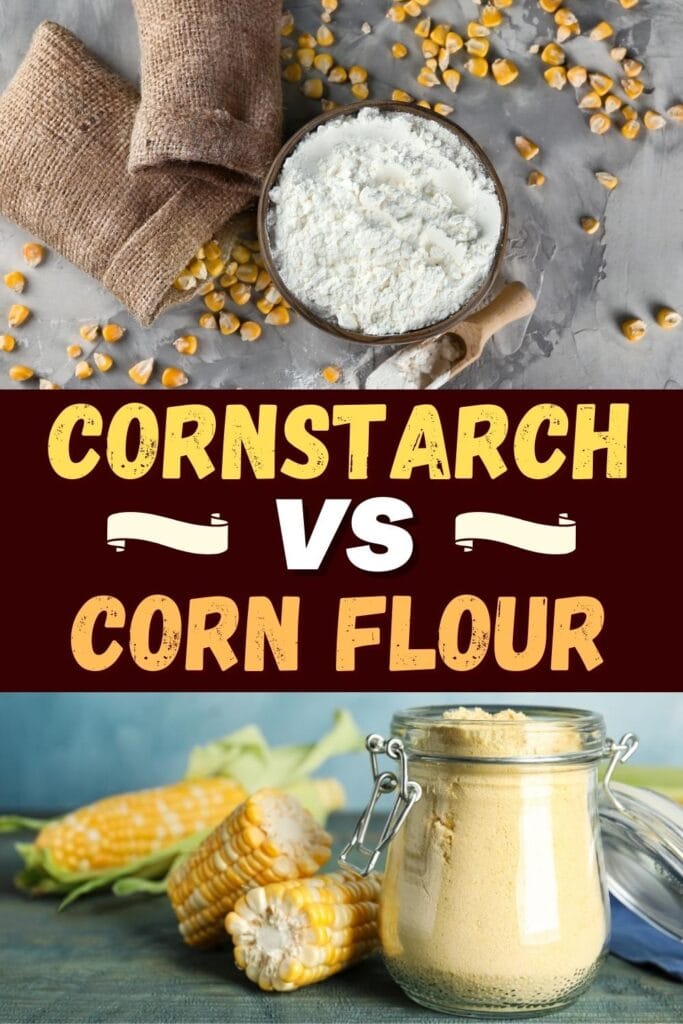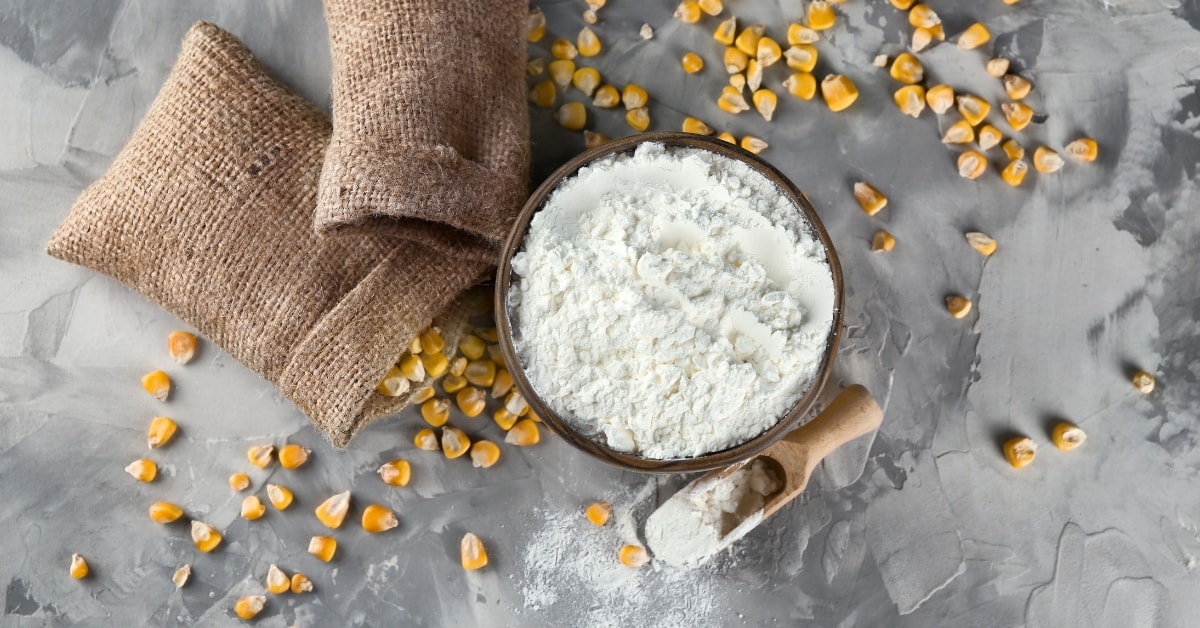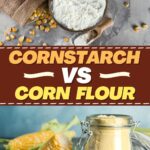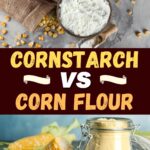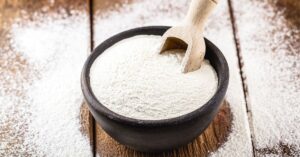What’s the difference between cornstarch vs. corn flour? In the culinary world, these two cause a lot of confusion.
But it all comes down to texture, taste, how they are made, and their uses.
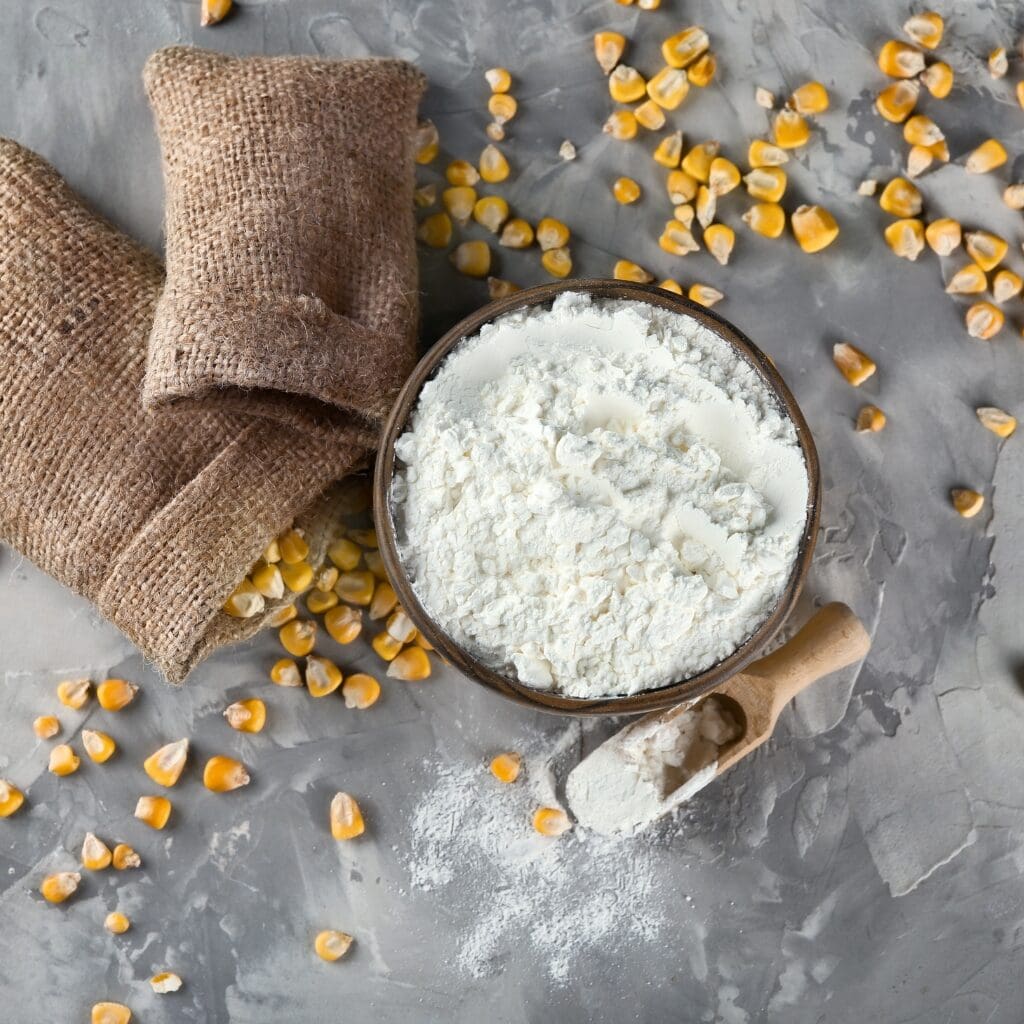
These two common kitchen staples are frequently confused. They share the same origin But they possess distinct characteristics that can greatly impact the outcome of your dishes.
Let’s unravel the mystery and discover the true essence of cornstarch and corn flour. This will empower you to make confident choices in your kitchen!
Cornstarch vs. Corn Flour (What’s the Difference?)
Several things set these two ingredients apart from each other. True, they both come from corn, but beyond that, they’re pretty distinct.
We’ll explore how these two ingredients differ.
Processing
The differences start right at the processing stage. Corn flour is simply flour made from grinding whole corn kernels into powder.
Cornstarch is made by processing only the corn’s endosperm into powder. The processes result in different ingredients with entirely different nutritional profiles.
For example, cornstarch has no protein or fiber, but corn flour has both. (3 grams of protein, 2 grams of fiber.) Corn flour also has more fat, vitamins, and minerals than cornstarch.
Texture
While both ingredients are fine, corn flour is noticeably coarser. Cornstarch is much finer and is more like baking powder than flour.
They have different colors, as well. Cornstarch is pure white, whereas some corn flour is yellow. There’s also white corn flour, but it’s still a dingier white than cornstarch.
Taste
As mentioned, corn flour comes from the entire corn kernel. As a result, it has a distinct corn flavor. It’s somewhat sweet and earthy. Cornstarch, though, has no taste at all and is neutral.
Because of its bland taste, people often use it as a thickening agent. It adds density without adding flavor.
Uses
Corn flour is used most often in baking. Use it as a coating for deep-fried foods. It can be a replacement for cornmeal in some recipes, too.
Cornstarch’s uses are much different. You can’t use it as flour or a substitute for cornmeal. Instead, people often use it as a thickening agent for sauces, soups, dressings, etc. It can also help make pie fillings more gel-like.
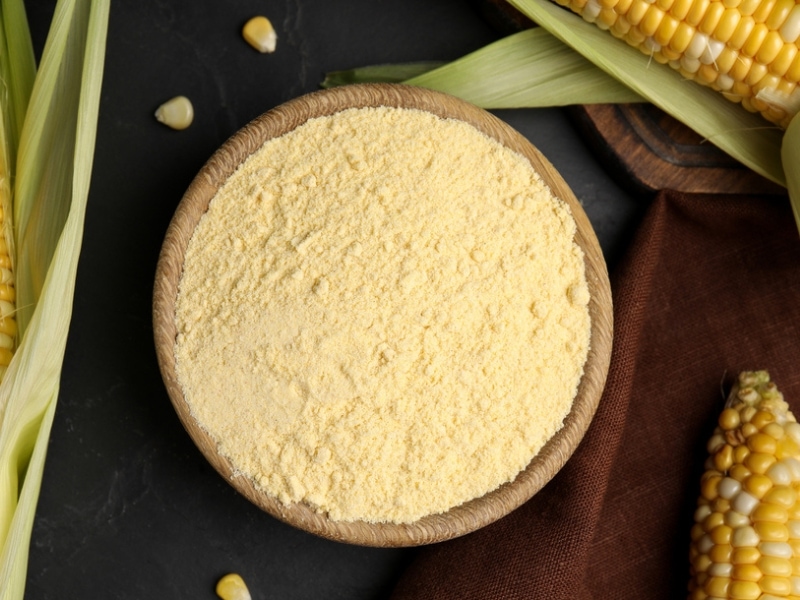
Confusing Naming Practices
So, if these ingredients are so different, why do people often confuse them?
It’s a matter of vocabulary. In some countries, the U.S. version of cornstarch is called cornflour. (No space in the name.) This is most evident in the following countries:
- Ireland
- The United Kingdom
- Israel
To make matters worse, these same countries may call the U.S. version of corn flour cornmeal. (Which is something totally different here in the States.)
So, if you see any of these listed in a recipe’s ingredients, determine where the recipe was written. The ingredients might be the U.K. versions if someone in the U.K. wrote it.

What Is Cornstarch?
Unsurprisingly, cornstarch is a type of starch.
It comes from a corn kernel’s endosperm after it’s been separated from the kernel. Producers do this by soaking the kernels until the endosperm and grain are easy to separate.
Then, they extract, grind, and dry the starch, creating the fine white powder we call cornstarch.
People use cornstarch to thicken sauces and soups or to add a gel-like consistency to desserts.
Sometimes, it’s also used in unrelated products, like powdered sugar or shredded cheeses. Manufacturers do this to keep the products from clumping together.
What Is Corn Flour?
Corn flour also comes from corn that has undergone a grinding and drying process. However, corn flour comes from entire corn kernels, not just the endosperm.
Because it comes from kernels, it also has a slightly yellowish to fully yellow color. It’s a gluten-free flour option for those with sensitivities.
People often use corn flour for baking or as a coating for fried foods.
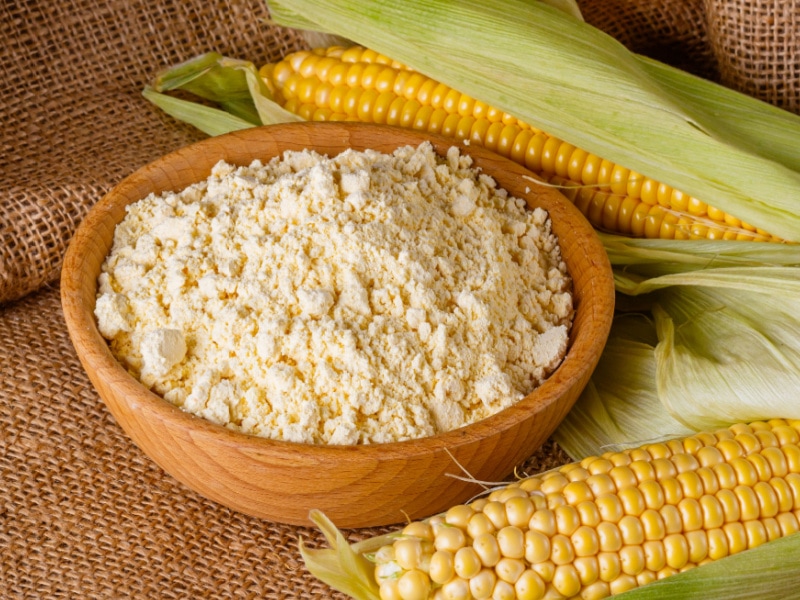
Yellow Corn Flour vs. White Corn Flour
There are actually two types of corn flour: white corn flour and yellow corn flour.
The difference comes from which type of corn the flour comes from. Yellow corn flour comes from yellow corn. White corn flour, of course, comes from white corn.
The yellow variety is the most common, but you can use either type for most recipes.
Can You Substitute Cornstarch for Corn Flour (and Vice Versa)?
Unfortunately, you cannot substitute cornstarch for corn flour. Nor can you swap them the other way around. They have very different uses.
Some recipes will call for both ingredients, but they still serve different functions. Cornstarch is starchy and corn flour is flour.
Cornstarch contains only negligible amounts of protein and fat (if any at all). Corn flour contains both fat and protein. That’s what makes it a popular baking ingredient.
Cornstarch is more popular as a thickening agent. The only use in which the two overlap is as a “breading” for fried foods. But even then, corn flour will provide an entirely different finish.
If you need a corn flour substitute, opt for one of these instead:
- Oat flour
- Buckwheat flour
- All-purpose flour (not gluten-free)
- Bread flour (not gluten-free)
Here are some substitutes for cornstarch:
- Tapioca starch
- Potato starch
- Arrowroot starch
Never try to use these two ingredients interchangeably.
